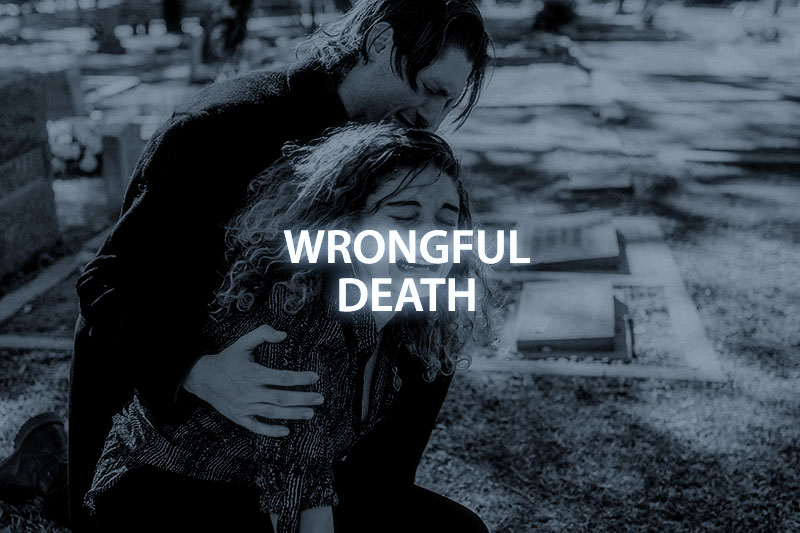Losing a loved one is a tragic event, especially when it is due to someone else’s negligence or wrongdoing. In such cases, pursuing a wrongful death claim can be an important path to justice and financial compensation. However, the legal process can be complex and daunting. In California, there are specific steps and options to consider, from gathering evidence to possibly proceeding to trial. This blog post will provide an overview of the necessary steps in pursuing a wrongful death claim to help clarify the process and prepare you for what lies ahead.
1. Determine Eligibility
Before taking any legal steps, it’s important to determine if you are eligible to file a wrongful death claim in California. As mentioned in previous posts, the decedent’s surviving spouse, domestic partner, children, or other dependents may have standing to file the claim.
2. Gathering Evidence
The foundation of any wrongful death claim is evidence. This may include police reports, witness statements, medical records, employment documents reflecting the deceased’s earnings, and any other proof of negligence or wrongdoing by the party responsible. It’s crucial to compile as much evidence as possible to build a strong case.
3. Consultation with an Attorney
An experienced wrongful death attorney can offer invaluable guidance through the complexities of the legal system. By reviewing the available evidence, an attorney can provide an informed perspective on the viability of the claim and what additional information may be needed.
4. Filing the Lawsuit
Once the necessary evidence is gathered and you have a legal representative, the next step is to file a wrongful death lawsuit in the appropriate court. Your attorney will draft and file a legal complaint against the party or parties believed to be responsible for the death.
5. Discovery Phase
After the lawsuit is filed, both sides will exchange information in a phase known as discovery. This process involves taking depositions, issuing subpoenas for documents, and asking written questions, called interrogatories, which must be answered under oath.
6. Negotiation and Settlement
Many wrongful death claims are resolved without going to trial. Both parties may agree to participate in negotiations to reach a settlement, often involving mediators or settlement conferences. Settling can result in a faster resolution and more predictable outcome, so it’s worth considering if the terms are fair and meet the family’s needs.
7. Going to Trial
If a settlement cannot be reached, the case will proceed to trial. At trial, a judge or jury will examine the evidence, listen to testimony, and determine whether the defendant is liable for the wrongful death. If the defendant is found liable, the court will then decide on the amount of damages that should be awarded to the plaintiffs.
8. Collection of the Award
Winning a wrongful death lawsuit is only part of the challenge; the next step is to collect the damages awarded by the court. This can sometimes be straightforward, but in other cases, it may require additional legal actions, especially if the defendant is unable or unwilling to pay.
9. Appeals Process
Either party can appeal the trial’s verdict if they believe there has been a legal error. This can prolong the process but is an important legal right for both parties.
Wrongful Death Attorney Caryn Warren Can Help!
The process of pursuing a wrongful death claim in California involves many steps and can be emotionally taxing. However, it is a necessary course of action for many families seeking justice and financial assistance for the hardships they face due to their loss. While no outcome can bring back a cherished family member, the legal process can provide a sense of closure and financial support to help families move forward.
If you’re considering pursuing a wrongful death claim, remember to seek the help of an experienced attorney, who can navigate the legal system on your behalf and help to bear some of the burden during this difficult time.
Personal Injury & Criminal Defense Services Available Throughout
Greater Sacramento, Yolo, Placer, and Solano Counties
Antelope, Arden-Arcade, Auburn, Benicia, Carmichael, Citrus Heights, Davis, Dixon, Elk Grove, Fairfield, Fair Oaks, Folsom, Galt, Gold River, Granite Bay, Iselton, Lincoln, Loomis, North Highlands, Orangevale, Rancho Cordova, Rio Linda, Rio Vista, Roseville, Rocklin, Sacramento, Suisun City, Vacaville, Vallejo, West Sacramento, Winters, Woodland

